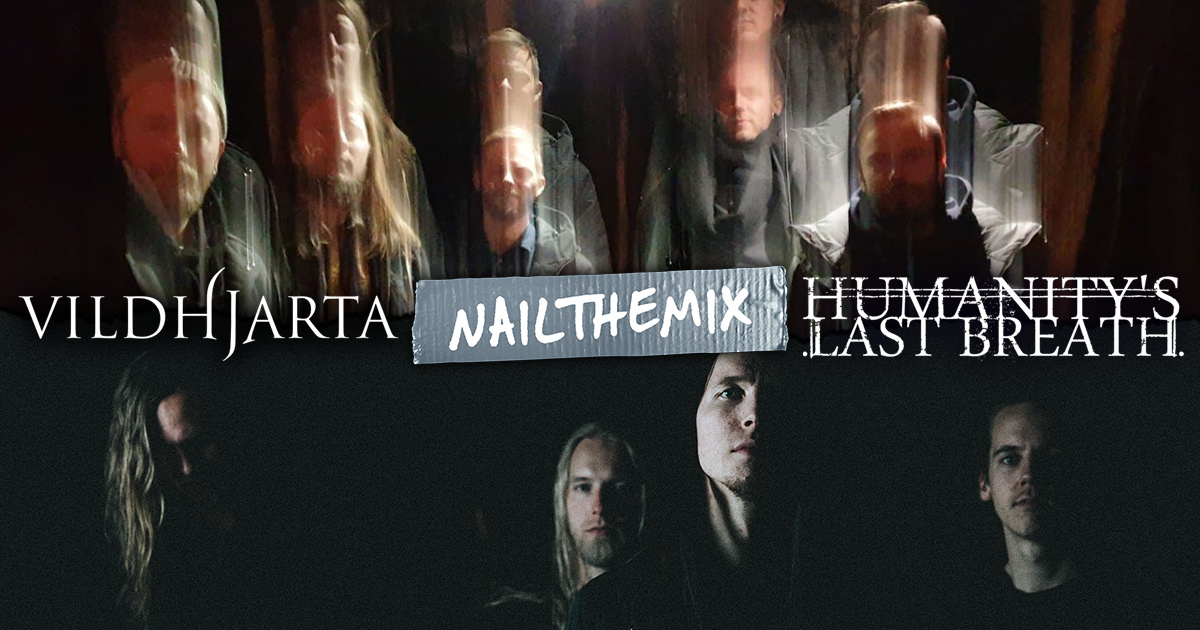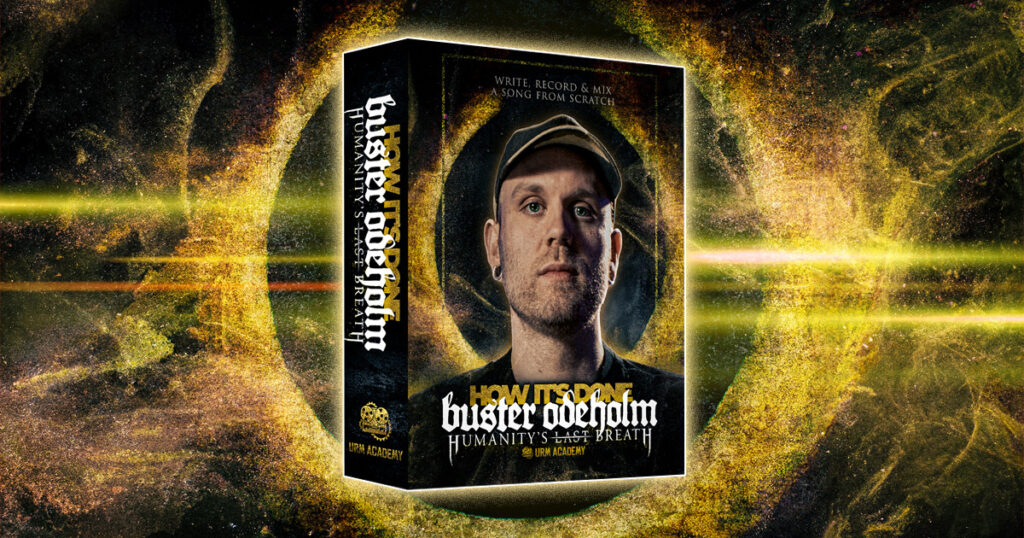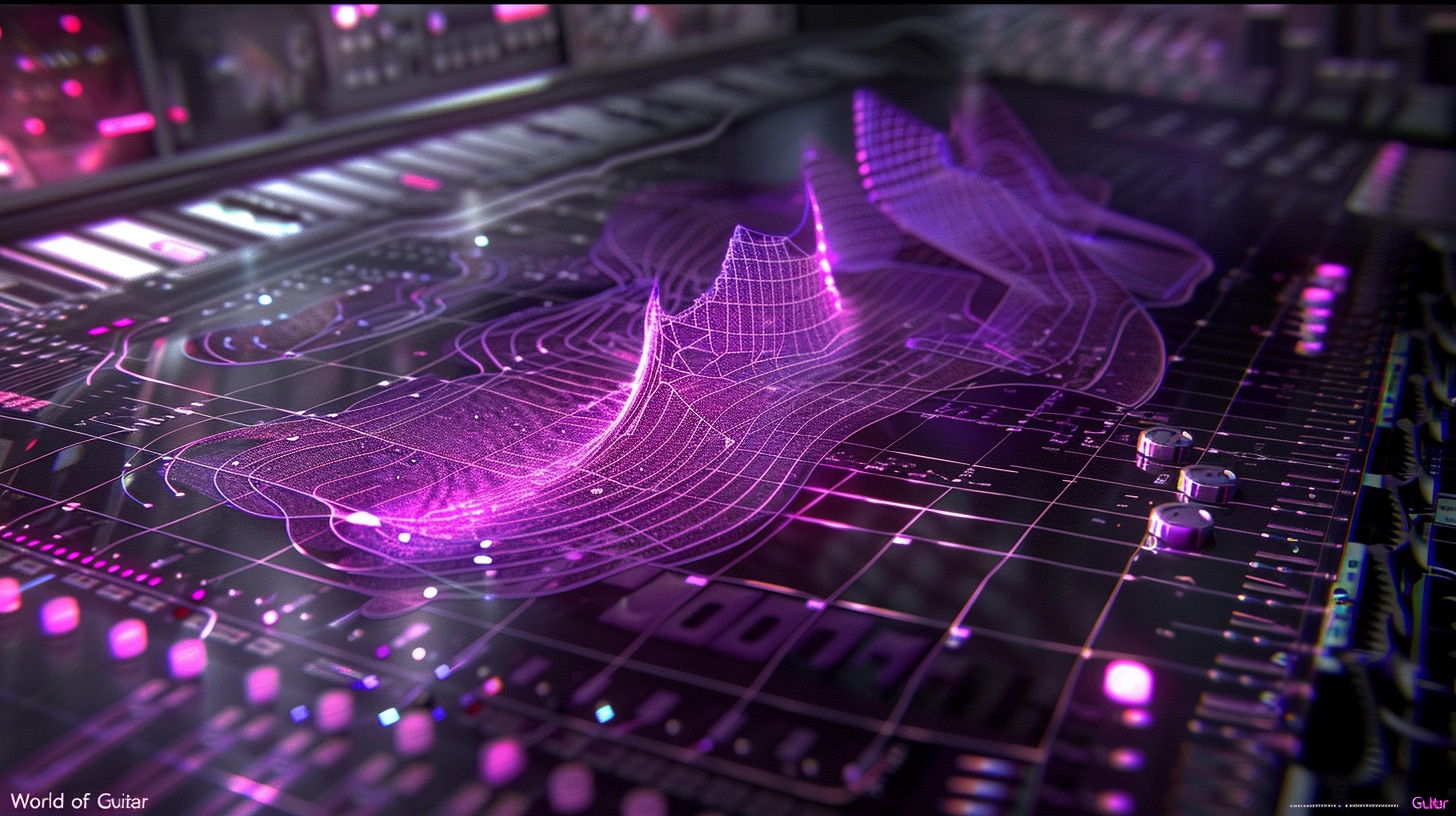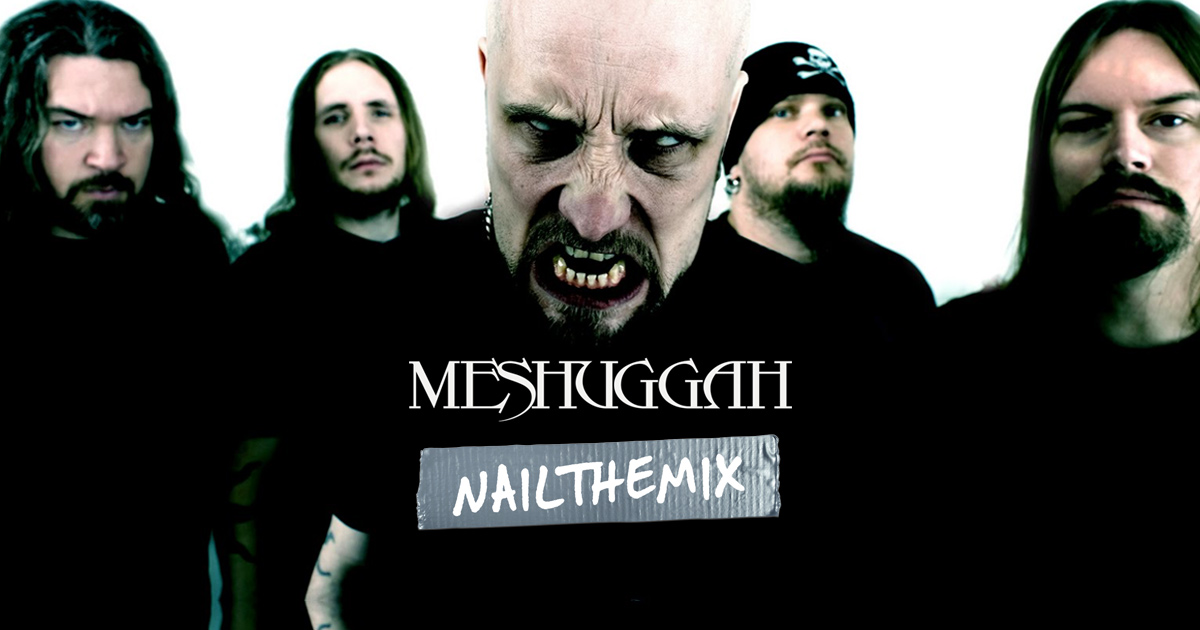
Crafting Vildjharta’s Ultra Low Guitar Tone with Buster Odeholm
Nail The Mix Staff
Let’s be real, Vildjharta’s guitar tone is in a league of its own. It’s got that sub-atomic low-end weight, but somehow every chaotic, springy note cuts through with insane clarity. It’s a sound that has left countless producers scratching their heads. How do they get that massive chug without it turning into a muddy mess?
We got the full breakdown straight from the source: producer and mixer Buster Odeholm, during his exclusive Nail The Mix session. The surprising truth is that it’s less about a mythical piece of outboard gear and more about a great performance, a very specific (and accessible) plugin chain, and some clever post-processing to make it all fit.
Forget what you think you know about processing low-tuned DIs. Let’s dive into how Buster crafts this legendary tone.
The Foundation: It Starts Before the DAW
Before you even think about loading an amp sim, the Vildjharta sound is built on a solid foundation. Buster made it clear that the player and the physical setup are non-negotiable parts of the equation.
Player and Guitar Setup Are Everything
First off, guitarist Calle’s performance is monstrous. He chugs incredibly hard, and that power and consistency are captured right in the DI. There’s no processing trick to fake that kind of raw energy. You can hear the clean, powerful transients with no unwanted string buzz.
The secret? High action. While many modern players chase super-low action for shredding, a higher setup on a baritone guitar is crucial for ultra-low tunings. It allows the strings to ring out and sustain properly, even under heavy-handed chugging, preventing the notes from flubbing out or choking.
The gear itself is, of course, a key component. Calle used one of his signature I-Axe Guitars, likely a 27″ or 28″ scale baritone model, loaded with Lundgren M6 pickups. This combination of a long scale length and articulate pickups is designed to handle these low tunings with clarity.
The Raw DI Signal Path
The signal hitting the interface is brutally simple: Guitar -> Whammy Pedal -> Focusrite Interface. That’s it.
Notice what’s missing? There’s no fancy compressor on the DI signal before the amp sim. There’s no automatic low-pass filter to cut out high-end fizz. Buster’s philosophy is simple and one every producer should remember: only do what is necessary. If the DI doesn’t have scratchy, unwanted noise, there’s no need to filter it out just for the sake of it.
The Complete Vildjharta Pod Farm Chain
The heart of this entire tone lives inside a single, classic plugin: Line 6 Pod Farm. Buster constructs the sound using a precise chain of modules, each playing a vital role.
Step 1: An Unconventional Boost Pedal
First in the chain is a boost pedal, but not your typical Tube Screamer. Instead of cutting low-end like a TS808, this boost actually adds bass while simultaneously pushing the high-mids. This adds that signature “springy” quality to the attack without thinning out the sound.
Boost Pedal Settings:
- Mid Frequency: 51%
- Treble: 60%
- Bass: 60%
Step 2: The Amp Sim
Next up is the amp model itself, providing the core distortion and character of the tone. The settings are dialed to be aggressive in the mids and presence, letting the boost and the cab shape the low end.
Amp Sim Settings:
- Gain: 50%
- Bass: 15%
- Mids: 85%
- Treble: 60%
- Presence: 70%
Step 3: The Secret Weapon: The Vildjharta Cab IR
Here’s where the real magic happens. Buster uses a specific user-loaded Impulse Response (IR). This isn’t just a random cab; it’s a file that Calle found which perfectly replicates the sound of their live rig: a Pod XT Live running into a Palmer DI pedal that had its own built-in cabinet simulation.
This IR is effectively the Vildjharta cab sound. On its own, it’s extremely dark and has almost no high-end information. This is a crucial piece of the puzzle, as it forces the next step in the chain to do some very heavy lifting.
Step 4: Aggressive EQ to Shape the Final Tone
Since the cab IR is so dark, a massive amount of post-amp EQ is needed to bring the tone to life. This isn’t just a gentle shaping EQ; it’s a “tone matching” tool used to carve out the final sound and add back all the high-end that the IR is missing.
This drastic move shows that you shouldn’t be afraid to use extreme EQ settings if they serve the final tone. This is one of many killer EQ strategies for mixing modern metal that separates pro mixes from amateur ones. To see exactly how Buster dials in this EQ and the rest of the chain, you can watch his full mixing session here.
Beyond the Amp Sim: Bus Processing for a Polished Mix
With the core tone from Pod Farm dialed in, Buster uses some additional bus processing to make the three guitar tracks (left, right, and center) sit perfectly in the dense Vildjharta mix.
Mid/Side EQ for Mono Compatibility
To ensure the guitars translate well everywhere—from massive studio monitors to a tiny Bluetooth speaker—Buster uses a clever mid/side EQ trick. He boosts the mid-range, but only on the mid channel, not the sides. This pushes the core melodic information of the guitar forward in mono sources while also conveniently carving out a weird high-end resonance.
Dynamics and Stereo Widening
From there, it’s a combination of classic and advanced techniques. A multiband compressor clamps down on the guitars—but with the low-end carefully bypassed to keep the chugs full and dynamic. He also uses a stereo widener to enhance the width. Interestingly, this means he’s both narrowing the tone (with the M/S EQ) and widening it at the same time, but he’s targeting completely different frequency ranges to achieve a specific result. These are the kinds of metal compression secrets that give a mix its professional polish.
Creating Space with Sidechain Compression
Finally, to ensure the kick and snare punch through the wall of guitars, he uses sidechain compression. The guitars are dynamically “ducked” by a tiny amount every time the kick and snare hit. This creates space and impact, allowing the rhythm section and the guitars to coexist without fighting for the same sonic space.

100+ Insanely Detailed Mixing Tutorials
We leave absolutely nothing out, showing you every single step
Learn How The Pros Do It
Breaking down Buster Odeholm’s Vildjharta guitar tone proves that a legendary sound is a sum of its parts: a great performance, smart gear choices, and a well-thought-out processing chain where every plugin has a purpose.
- Foundation First: A great player with a properly set up instrument is key.
- The Pod Farm Chain: An unconventional boost, a specific amp, and a very dark custom IR are the core.
- Drastic EQ: Don’t be afraid to make huge EQ moves to shape a unique IR.
- Smart Bus Processing: Use Mid/Side EQ and sidechain compression to make your guitars fit perfectly.
Seeing the settings is one thing, but watching a world-class producer like Buster Odeholm make these decisions in real-time, explaining every move in the context of the full mix, is a game-changer. At Nail The Mix, you get to be a fly on the wall for these exact moments. Every month, you get the raw multitracks from a massive song and watch the original producer mix it from scratch.
Vildhjarta on Nail The Mix
Buster Odeholm mixes "Den Helige Anden"
Get the Session
Stop guessing and start learning the techniques that will actually elevate your mixes. Check out the full Vildjharta session with Buster Odeholm, and if you’re ready to go beyond presets, grab our free guide, Unlock Your Sound, to take the next step in your mixing journey.
And for those who want to dive really deep, get Buster’s course “How It’s Done.”
Get a new set of multi-tracks every month from a world-class artist, a livestream with the producer who mixed it, 100+ tutorials, our exclusive plugins and more
Get Started for $1





